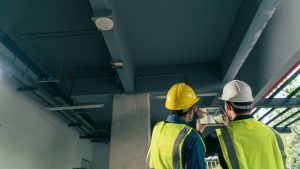Artificial Intelligence (AI) has solved a plethora of problems in the industrial world for quite some time. AI is famous for facilitating companies by predicting post-COVID measures, filtering emails from spambots, identifying trends in marketing fields and many other services. Hypothetically, if a second Titanic or a second Chernobyl power plant were guided with AI technology, the world’s history would have fewer fatal stories. However, did you know that AI can also help asset managers optimise the performance of mechanical assets?
Acquiring, deploying, utilising, maintaining and replacing costly mechanical assets is a huge responsibility and a commonly arduous management cycle that disrupts the smooth operations of fixed-asset-based organisations. It is the intricateness, criticality and seriousness of this obligation that makes AI a not-to-be-missed digital capability for mechanical asset managers in the modern era.
Let us learn how AI can minimise the complexity of your mechanical asset management efforts by powering IIoT-driven Machine Learning (ML) models. Learn more about how you can use AI algorithms to ensure that your mechanical assets have a complete balance between their risks, costs and performances.
Modern Mechanical Asset Management
- CNC Machines
- Conveyor belts
- Elevators and escalators
- HVAC Systems
- Metal Stamping Machines
- Painting Machines
- Plumbing systems
- Underground Car Park Ventilation Systems
- Welders etc
In the 20th century, mechanisation brought significant changes to the industrial world. Mechanisation became an industrial upgrade that was automatically mandatory for all industrial premises. In the 21st century, the utilisation of AI capabilities became an equally indispensable upgrade due to the challenges faced by industrial leaders who underwent a mechanised transformation. Some of the main challenges faced by modern mechanical managers are:
- Failing to ensure required resources and availability of maintenance teams are sufficiently ready during asset collapses
- Failure to reach healthy OEE and ROI levels constantly
- Hesitant in confidently enabling safe and healthy work environments due to dynamic risks affecting the performance and stability of mechanical systems
- Inability to precisely pinpoint critical mechanical machines or parts of machines
- Overestimation or underestimation of budgets misleads financial decision-makers
- Spontaneous mechanical system breakdowns result in expensive decisions
- The limitation of age-based asset management otiosely wastes a lot of money, and despite
AI and Mechanical Asset Manoeuvring
Mechanical Asset Management can use AI with IoT-micro-metering, which surges mechanical asset information to train AI models and help them detect hidden trends, data patterns and other KPIs to empower asset decisions. Ultimate intelligent management efforts offered by AI tools help mechanical asset managers to maximise efficiency and regulate energy consumption and resource utilisation with less time, money and effort. AI is well-known among mechanical asset specialists for it allows:
- Cluster analysis, decision trees and randoms forests for asset classification,
- Evolutionary algorithms for asset optimisation,
- LASSO, support vector machines and artificial neural networks for asset forecasting,
- Natural language processing tools to get actionable insights for asset decisions
Digital technologies fuelled by AI capabilities consolidate mechanical asset information through various sources (IoT sensors, applications, databases etc.) and run them through the AI tools mentioned above. These tools have the propensity to accurately indicate real-time future asset conditions, risk indexes, criticality levels, degradation patterns, financial concerns, performance scales, environmental impacts and parametric behaviours. This intelligence helps mechanical assets to make failure-proof mechanical asset management decisions without exhausting employees, relentlessly spending, otiose power consumption or doubt about asset failure. Thus, saving an abundance of money, time and effort compared to conventional mechanical asset management strategies.
AI and Future of Industrial Apparatus
Industrial asset-centric organisations are using a range of AI and statistical models to make investment and maintenance decisions. This means a sizable proportion of jobs will be replaced by automated smart robots and other mechanical machines. Mechanical asset maintenance would be faster, less human-oriented and data-driven, and this is something mechanical specialists of the new age can afford to miss out on.
In a couple of decades, industrial centres that rely on mechanical assets will use competency-based learning cohorts delivered by AI to align process intelligence with business demands. AI will offer value-aligned models to keep track of mechanical asset lifecycles and connect asset data structures to inexpensive IoT devices and digital twins. Therefore, wielding the power of AI is not a luxury for industrial practitioners anymore; it is a necessity to achieve the best levels of asset management.
The next-generation artificial intelligence is around the corner, but are you ready to face the AI disruptions that will redefine your mechanical asset management culture in the near future?







